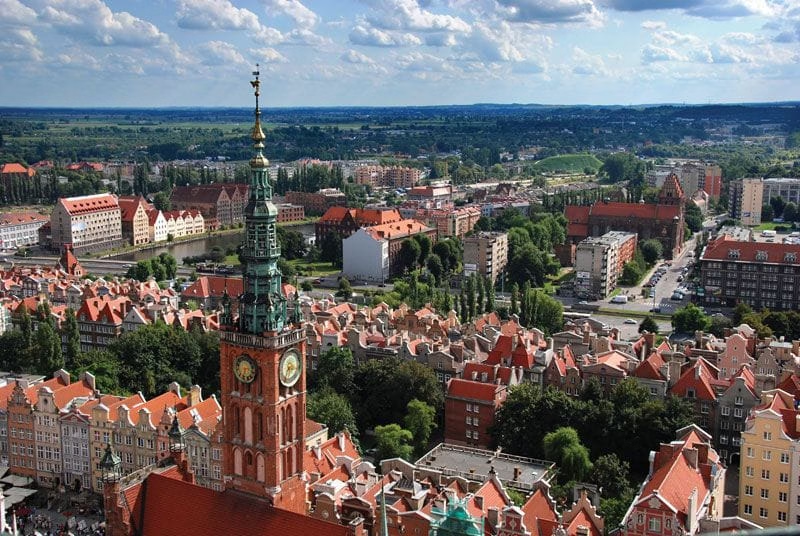
Introduction
When people ask when Poland became a country, the answer goes back to 966 AD, when Duke Mieszko I accepted Christianity, uniting tribes under one leadership. That moment created the foundation of the Polish state. Since then, Poland has grown, faced challenges, and re-emerged as a strong European nation.
In this article, I explain how Poland became a country, explore Poland history, highlight its struggle for Poland independence, and share why its journey continues to inspire the world.
when poland became a country
The Birth of Poland in 966 AD
Poland became a country in 966 AD through the baptism of Duke Mieszko I. By adopting Christianity, Mieszko I united Polish tribes, gained international recognition, and connected the new nation with Western Europe. This step also built the cultural and political foundation of Poland.
This event, known as the “Baptism of Poland,” is widely celebrated as the country’s official starting point.
Poland in the Middle Ages
After its foundation, Poland grew into a strong kingdom. The Piast dynasty expanded territories, established trade, and built powerful alliances. During the 14th and 15th centuries, under the Jagiellonian dynasty, Poland became one of the most influential states in Europe.
Wars, reforms, and alliances shaped Poland history, making it a central power in the region.
The Polish-Lithuanian Commonwealth
In 1569, Poland formed the Polish-Lithuanian Commonwealth, one of the largest and most diverse states in Europe. It introduced early democratic traditions with an elected king and a strong parliament (the Sejm).
The Commonwealth became famous for religious tolerance, cultural growth, and military strength. However, internal conflicts and external pressures eventually weakened the union.
The Partitions of Poland country
By the late 18th century, Poland faced invasions from powerful neighbors: Russia, Prussia, and Austria. Between 1772 and 1795, these nations divided Poland in three partitions, erasing it from the map of Europe.
For 123 years, Poland disappeared as a state, but the Polish people never gave up their fight for independence.
Poland Independence in 1918
After World War I, Poland regained independence on November 11, 1918, with the Treaty of Versailles recognizing its sovereignty. This moment marked the rebirth of Poland as a country after over a century of occupation.
The Second Polish Republic faced challenges but represented freedom, unity, and national pride.
Poland During World War II
Poland independence faced another threat in 1939, when Nazi Germany and the Soviet Union invaded. World War II devastated the country, leading to millions of losses, including the tragic Holocaust.
Despite the suffering, Poland resistance fighters and underground movements kept the spirit of freedom alive.
Communist Era in Poland
After World War II, Poland fell under Soviet influence and became part of the Eastern Bloc. For decades, the country lived under communism, with limited freedoms and economic struggles.
Yet, Polish people continued to fight for liberty. The Solidarity movement of the 1980s, led by Lech Wałęsa, played a key role in ending communism in Central Europe.
Poland Today
Poland regained full sovereignty in 1989 with the fall of communism. It joined NATO in 1999 and the European Union in 2004, marking its integration into the global community.
Today, Poland thrives as a democratic nation with a rich cultural heritage, a strong economy, and a strategic role in Europe.
Poland History and Culture country
Poland history reflects resilience, unity, and cultural pride. From medieval castles to UNESCO heritage sites, Poland continues to celebrate its traditions.
The Polish language, Catholic faith, and cultural icons like Chopin and Copernicus highlight Poland’s lasting influence.
Poland Independence as a Symbol of Resilience
Every step of Poland independence tells a story of determination. Despite partitions, wars, and occupations, Poland never lost its identity. The country’s journey inspires nations worldwide to value freedom and sovereignty
Related Keywords Used
Poland history
Poland independence
(Extra naturally included keywords: Poland culture, Poland NATO, Poland EU, Poland democracy, Poland sovereignty).
FAQs About Poland as a Country
Q1. When did Poland become a country?
Poland became a country in 966 AD with the baptism of Duke Mieszko I.
Q2. When did Poland regain independence country?
Poland regained independence on November 11, 1918, after World War I.
Q3. Why did Poland disappear from the map?
Poland disappeared after the partitions of 1772–1795 by Russia, Prussia, and Austria.
Q4. How did Poland end communism?
The Solidarity movement in the 1980s led to democratic reforms and independence in 1989.
Q5. Is Poland part of NATO and the EU?
Yes, Poland joined NATO in 1999 and the European Union in 2004.
Final Thoughts and Call to Action
Poland became a country in 966 AD, but its story is much more than a date. It reflects centuries of resilience, struggles for independence, and victories for freedom. Today, Poland stands as a proud European nation shaping global security and culture.
📞 Contact us at +48-22-000-0000
🌐 Visit us at http://www.polandinsights.com
Discover more about Poland history, independence, and its role in today’s world.
SEO Tags
when poland became a country
poland, poland history, poland independence, when poland became a country, poland culture, poland nato, poland eu, poland sovereignty, poland democracy
https://manyviral.com/can-trumps-big-beautiful-bill-pass-the-senate/
You might to like read this blog
Leave a Reply